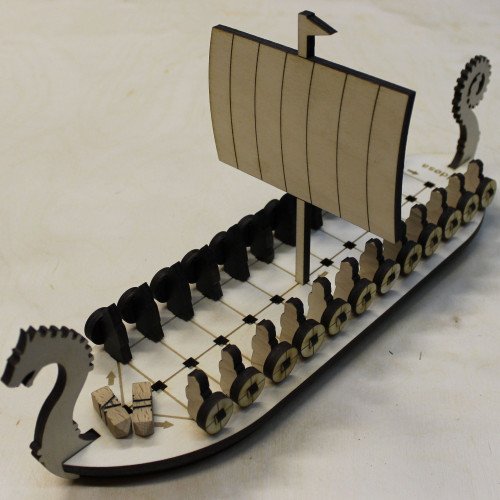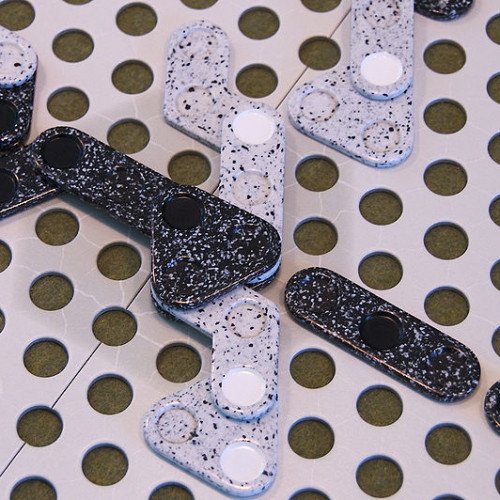DALDØS VS PÜNCT

DALDØS
Daldøs is a running-fight board game only known from a few coastal locations in southern Scandinavia, where its history can be traced back to around 1800. The game is notable for its unusual four-sided dice (stick or long dice). In Denmark it is known as daldøs in Northern and Western Jutland (Mors, Thisted and Fanø), and possibly as daldos on Bornholm. In Norway it is known under the name of daldøsa from Jæren, where, unlike in Denmark, a continuous tradition of the daldøs game exists. Daldøs has much in common with some games in the sáhkku family of Sámi board games. Sáhkku is known to have been played among Sámi on the northern coast and eastern-central inland of Sápmi, far away from Jæren and Denmark. Otherwise, the closest relatives of this game appear to be the tâb games from Northern Africa and South-western Asia, possibly apart from one unlabelled diagram in a codex from Southern England. The board is boat-shaped and has three parallel rows of holes, two of which (A and B) have 16 holes each, while the middle row has an extra hole in the prow of the ship. Each player has 16 spatula-shaped pieces with a bottom end fitting into the holes of the board. One player has pieces that are rather wide and thin; whereas the other player's pieces are more obelisk-shaped. At the beginning of the game, player A's pieces are placed in the holes of row A so that the spatulas are perpendicular to the row (un-dalled), and equivalently for player B. Later in the game, the pieces will be turned (fordallede, or dalled) so that the spatula is parallel to the rows. Two special dice are used. Each die is a four-sided long die with pyramidal or rounded ends, preventing the die from standing on end. They may be about 2 by 2 cm in cross section, and 4 cm long. The four sides are marked A (with the value 1, called dallen, i.e. the dal), II (2, probably called døs), III (3) and IIII (4). According to some sources, the dal is opposite to III.
Statistics for this Xoptio

PÜNCT
PÜNCT is a two-player strategy board game. It is the sixth (and final) release in the GIPF project of six abstract strategy games, although it is considered the fifth game in the project. It was released in 2005. PÜNCT won the Games Magazine Best Abstract Strategy game for 2007. The PÜNCT board game is one of six games a part of the GIPF project. This project was created by Kris Burm and is a series of six abstract games. PÜNCT is the 5th game of the project and the board of this game is shaped like a hexagon. This game was released in 2005.[citation needed] PÜNCT is a two-player connection game. The objective is to connect two sides of a hexagonal board, using pieces which cover three hexes each. The pieces can be placed, moved, rotated, and stacked in various ways, restricted by the geometry of the board, the shape of the pieces, and gravity. Players can bring new pieces to the board or can attempt to connect the pieces already in play. The objective of the game is to mislead the opponent. When the players take their first turn, they are not able to use the central hexagon. The PÜNCT piece is used as a point of reference throughout the game, but the PÜNCT piece can't be moved when the player is making a move. Minor dots can land on the other player's piece, but the PÜNCT piece may not. In order to make a move, three dots must be in perfect alignment. The pieces that are on top of all of the other pieces have the most power in this game. The dots on the ends of the pieces must be at the same level horizontally to play this game correctly. In order to make a bridge in this game, you must perform a jump move on a piece already on the board. The positions of the dots at the end don't have to be aligned with the middle or stable horizontally. When determining the winner, a player can lift one piece at a time to determine if a connection was made. To connect opposite sides in this game, players can move pieces on top of other pieces or they can stack pieces to block the opponent's connection, ergo, making a connection for themselves. The actual PÜNCT piece, which is a rounded piece that has one point, cannot be used to make a connection or form a “chain” but rather used as a point of reference.